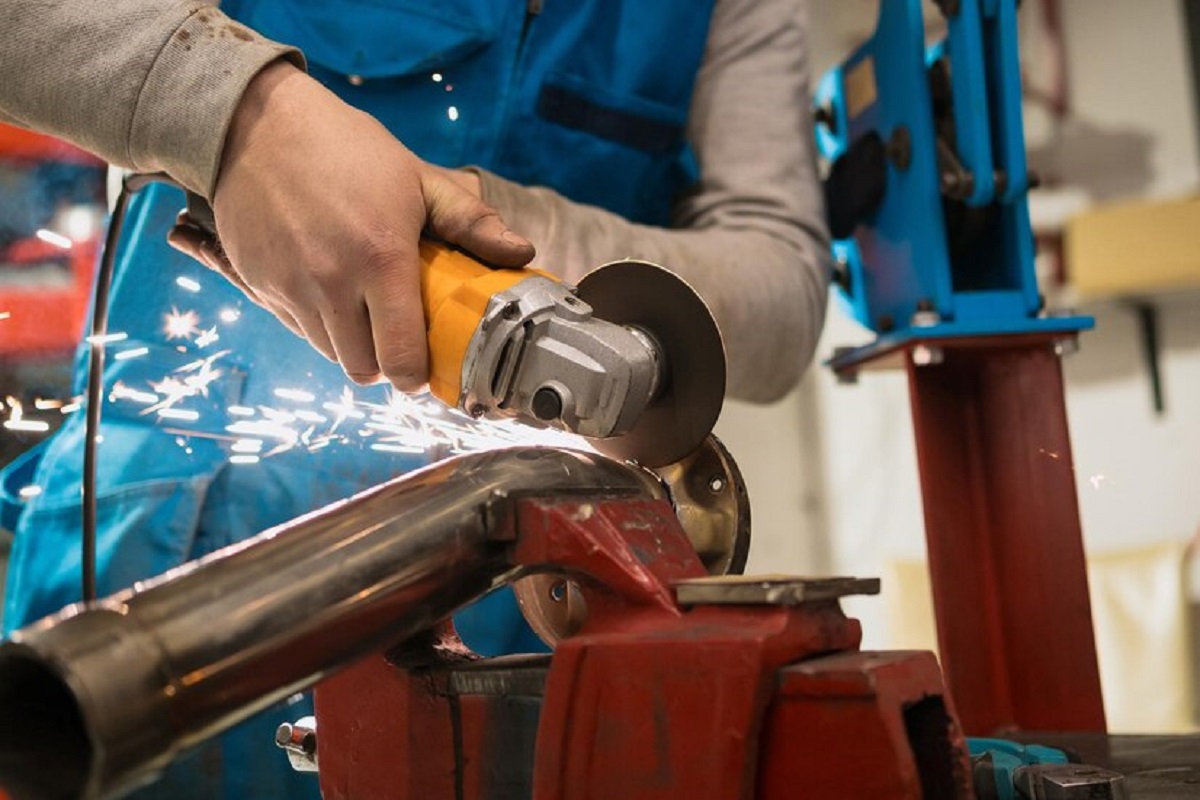Metal rods are widely used in various industries and applications, ranging from construction and manufacturing to automotive and engineering. To manipulate and shape these rods, cutting tools specifically designed for metal cutting are essential. In this article, we will explore the different tools used to cut metal rods, including their features, brands/models, and research data. Whether you’re a professional in the industry or a hobbyist looking to work with metal rods, understanding the available cutting options is crucial. So, let’s dive into the world of metal cutting tools!
Angle Grinders: Versatile and Powerful
One of the most popular tools for cutting metal closet rod is the angle grinder. Discover how to cut metal closet rod. This handheld power tool is known for its versatility and cutting efficiency. Angle grinders feature a motor that spins a disc or wheel, allowing for precise and fast metal cutting. With a range of disc options, such as abrasive cutting discs or diamond blades, angle grinders can effectively cut through various metal alloys.
Plasma Cutters: Precision and Speed
Plasma cutters are highly efficient tools used for cutting metal rods with exceptional precision and speed. These machines utilize a high-velocity jet of ionized gas, known as plasma, to melt and sever the metal. Plasma cutters are especially useful when cutting thick metal rods or creating intricate shapes and designs. Popular brands/models in the market include Hypertherm Powermax, Miller Spectrum, and Lincoln Electric.
Circular Saws: Straight Cuts with Ease
Circular saws, commonly used for woodworking, can also be equipped with metal cutting blades to cut through metal rods. These saws provide straight and accurate cuts, making them suitable for projects that require precise measurements. When using a circular saw for metal cutting, it’s essential to choose the appropriate blade designed specifically for cutting metal. Notable brands/models for metal cutting circular saws include DEWALT, Makita, and Milwaukee.
Hacksaws: Traditional and Reliable
Hacksaws are a classic tool for cutting metal rods and have been used for decades. These hand tools consist of a fine-toothed blade attached to a frame. Hacksaws offer a reliable cutting method, especially for smaller metal rods or detailed cuts. While they may not provide the same speed as power tools, hacksaws are portable, easy to use, and cost-effective. Popular brands/models for hacksaws include Stanley, Bahco, and LENOX.
Bandsaws: Power and Precision
Bandsaws are commonly found in professional workshops and industrial settings. These power tools feature a continuous band of toothed metal that rotates around two wheels, enabling accurate and efficient metal cutting. Bandsaws are ideal for cutting metal rods of various sizes and shapes. They offer greater stability and control compared to other cutting tools. Noteworthy brands/models in the bandsaw market include JET, Grizzly, and WEN.
Cutting Torches: Heat and Precision
Cutting torches, often used in heavy-duty metal fabrication and construction, utilize a combination of fuel gas and oxygen to create a high-temperature flame. This intense heat allows for precise cutting of metal rods, including thick and heavy-duty materials. Cutting torches are particularly useful for industrial applications that require clean and precise cuts. Popular brands/models for cutting torches include Victor Technologies, Harris, and Smith Equipment.
Conclusion
When it comes to cutting metal rods, a variety of tools are available to suit different requirements. From the versatile angle grinders and precision plasma cutters to the traditional hacksaws andGet Access Now: https://bit.ly/J_Umma
FAQs (Frequently Asked Questions)
Can I use a regular saw to cut metal rods?
While regular saws may work for softer metals, it is recommended to use tools specifically designed for cutting metal rods to ensure clean and precise cuts.
Which tool is best for cutting thick metal rods?
Plasma cutters and cutting torches are highly effective for cutting thick metal rods due to their high heat and precision.
Do I need to wear protective gear when using metal cutting tools?
Yes, it is crucial to wear appropriate safety gear, including safety glasses, gloves, and hearing protection, when operating metal cutting tools to protect yourself from potential hazards.
Are there any safety precautions I should follow when using these tools?
Absolutely! Always read and follow the manufacturer’s instructions, wear protective gear, secure the workpiece properly, and maintain a safe distance from others while operating metal cutting tools.
Can these tools be used to cut other materials besides metal rods?
Yes, some of these tools, such as angle grinders and circular saws, can be used to cut other materials like wood or plastic by changing the cutting blades. However, it is essential to use the appropriate blade for each material.

